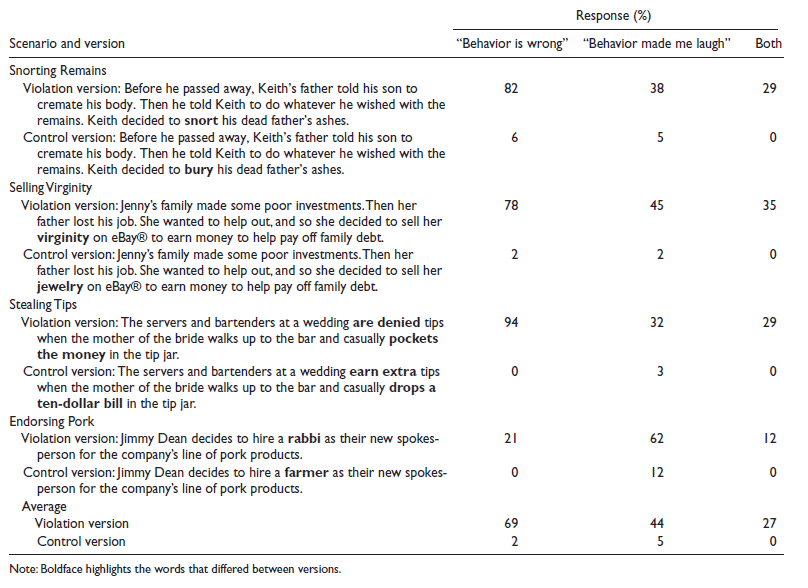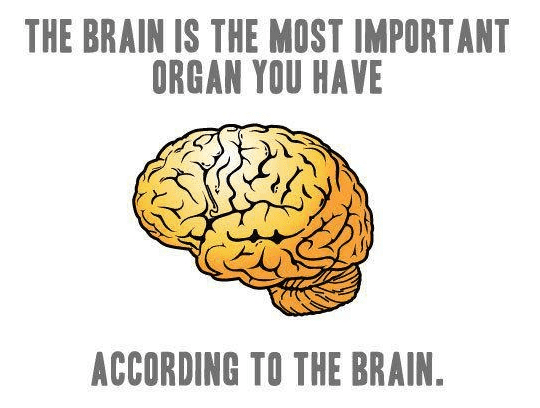While laughter has been shown not to be an entirely human trait, but a behavior shared by all great apes which can be traced back as far as 16 million years ago, it is still an indispensable part of human social structure.
Some say laughter is the greatest medicine, alongside a good night’s sleep. Old wives tales aside, some researchers have sought to deconstruct humor and learn what makes it tick, by studying what makes us tickle.
Yet despite their best efforts, deconstructing humor is not as easy as it may seem. The underlying mechanics of humor remain somewhat elusive, although there are certain ‘recipes’ and ‘formulas’ that many professional comedians especially use in their repertoire.
Humor is too broad to be distilled easily in ‘say this and you’ll likely make X% of people laugh”. As anyone who has tried to explain a bad joke to a bewildered friend, such attempts are anything but funny.
Humor can be conveyed through words, but also through silent action or images, movies, skits, plays, and so on. Humor is always involuntary. You can’t force yourself to laugh genuinely, which makes humor even more elusive.
With this caveat out of the way, here are some of the imperfect models of humor that scientists have found through various research.
Humor = tragedy + time or distance
Professor Peter McGraw of the University of Colorado, Boulder, has always been puzzled by the mechanics of humor. In 2010, along with colleagues, he sought to establish the elements that induce laughter – something that many comedians and great storytellers have always known intuitively.
Through his studies, McGraw has come up with the benign violation theory, which in fine lines says that hilarity surfaces when mockery is made out of a seriously tragic event but only after a long time has elapsed. More or less the same effect can be achieved by ridiculing mildly tragic events a very short time after they happen.
A car crash is nothing to laugh at, but if everyone’s safe and sound in the aftermath, you might find yourself entertaining your friends with the story a few months later. If you happen to slip on a banana peel and mildly hurt your derrière, you’ll inevitably be the center of attention and trigger a wave of laughter from bystanders, but the event won’t be nearly as funny if you talk about it the next day.
For something to be funny, “there needs to be something wrong,” McGraw says, who goes on to quote Mark Twain who said the secret source of humor is not joy, but sorrow. “That’s what’s sort of the counterintuitive part of humor,” McGraw says. “It’s generally this good, beneficial thing, but it has its roots in potentially negative experiences.”
Counter-intuitive indeed, since violations, in essence, trigger negative emotions, but when these violations are put in a setting or time frame that makes them benign, they may trigger a positive emotion. It’s a fascinating psychological phenomenon, so the researchers couldn’t resist conducting some experiments to check the theory out.
In one of the experiments, for instance, participants almost unanimously felt that a severe violation like getting hit by a car would be more humorous if it occurred five years ago than if it happened yesterday.
Similarly, participants felt it would be funnier if a stranger accidentally donated nearly $2,000 to charity from their savings account than if the same thing happened to a friend.
In the first case, the violation was sweetened by time, while in the second, social distance removed the negative emotions. At this stage, it’s worth mentioning that volunteers were given candy for their participation in the study.
Here are some of the scenarios put to play in the benign moral violation part of the study, each scenario coming in two versions – violating and control.

These findings are quite interesting as they could help us go beyond humor and study how human social structure evolved. Flipping tragedy and turning it into a positive experience can be seen as a coping mechanism that humans evolved in order to face life’s constant adversities.
“If you can laugh about it, how bad can it really be?” McGraw says. “You take the violations in the world and you make them benign, you make them okay…[and] they won’t affect you as negatively.”
Crude and crass: why we laugh at inappropriate jokes
Humans are weird, mkay. McGraw’s research also delves into why certain situations that should elicit disgust are actually perceived as funny by some people. The formula, in this case, is that an anecdote or scenario needs to violate some moral or social norm while being benign and reconcilable at the same time.
In one experiment, study participants were presented with two scenarios. One describes the company Jimmy Dean, famous for its breakfast sausages, using a rabbi as a spokesman for a new line of pork products (highly non-kosher). The other scenario described Jimmy Dean hiring a farmer as the spokesman. Most participants found the first scenario humorful, which they judged as “wrong” in contrast to the control scenario.
The researchers cranked up the dark humor in another experiment in which participants had to read out loud a scenario in which a man rubs his genitals against a kitten. In one version the kitten “purrs and seems to enjoy the contact”, while in another version the kitten “whines and does not seem to enjoy the act.”
Regardless of the scenario, more than 90% of participants judged the situation as both wrong and disgusting. However, 61% of the participants were amused by the scenario in which the kitten wasn’t hurt, in contrast to only 28% who found the second scenario with the kitten obviously not enjoying the sex act as funny. The researchers explain that although a social norm is violated (bestiality) since no one is harmed, the behavior is worthy of a chuckle.
Crude jokes and dark humor also work because of psychological distance. People laugh at gags where violence is present, such as when the Three Stooges get in a fight or get hurt, but the violation of the social norms is negated by the fact that we know it isn’t real. Psychological and social distance may also explain why we find certain moral and norm violations funny, such as outrageous funny videos on YouTube, such as this Indonesian chain-smoking toddler.
“When I was first told about that, I laughed, because it seems unreal — what parent would let their kids smoke cigarettes? The fact that the situation seemed unbelievable made it benign,” McGraw said. “Then when I saw the video of this kid smoking, it was no longer possible to laugh about it.”
People are more likely to find inappropriate jokes funny if they were told by someone they trusted or had a positive relationship with. We tend to give people a lot of leeway when it comes to humor and we forgive them for saying things that might be offensive in other contexts because we assume they’re just joking.
However, it’s easy to see how inappropriate humor can cause harm. It’s a double-edged sword that can bring people together but can also be used to exclude or harm others.
The sense of superiority
“We tend to find things funny that make us feel smarter or better than other people,” says McGraw. This is why we might laugh at a clever insult or a witty put-down – it makes us feel like we’re in on the joke and part of an exclusive group. Indeed, since ancient times people have been known to find humor in the misfortunate of others, a type of humor known as schadenfreude.
When we witness someone else’s misfortune, we may feel a sense of relief that we are not in their position, or a sense of validation that our own choices or behaviors are superior to theirs.
This sense of superiority is often accompanied by feelings of pleasure or amusement, as we enjoy the spectacle of someone else’s misfortune. In a 2018 study published in the journal Neuropsychologia, researchers found that participants who were high in schadenfreude showed increased activity in brain regions associated with reward and pleasure when watching videos of others experiencing pain or failure.
Humor as a relief
Laughter is more than just an expression of joy or amusement; it’s a powerful tool that can help us relieve tension and even improve our health. This idea, known as the relief theory of humor, dates back to the pioneering work of Sigmund Freud. According to Freud, humor allows us to release psychic energy that builds up as a result of tension in our lives.
Freud’s theory has been put to the test in many studies, which have shown that laughter can have profound psychological and physiological benefits. It can reduce stress, anxiety, and even physical pain. In short, laughter is good for the soul and the body.
One area where this theory is particularly relevant is in interracial interactions. These situations are often fraught with tension and can be difficult to navigate. However, when humor is used in the right way, it can help to ease the tension and make these interactions more comfortable.
Many comedians have tackled this topic with great success, using humor to highlight the absurdity of our differences and the common ground we share. In doing so, they create moments of relief that allow us to see the humor in our differences and bridge the gap between us.
In a similar vein, a video of a moose charging a man can be funny precisely because of the relief that comes when the tension is finally released. As the man and the moose face-off, the tension builds, and we wonder what will happen next.
But when the moose eventually backs down and scurries away, we can breathe a sigh of relief and laugh at the absurdity of the situation. Of course, if the situation had turned violent, the humor would have been lost, and the video would have been a much different experience.
The secret sauce of humor: surprise
Humor can be a strange and mysterious thing, and no theory captures this better than the incongruity theory of humor. This theory suggests that we find things funny when they are fundamentally incompatible or when they subvert our expectations in unexpected ways.
This is seen in jokes where the punchline is a surprising twist that defies our expectations.
“There is a lesbian couple next door to me, and for Christmas they bought me a Rolex. I don’t think they understood when I said I wanna watch.”
“A snake walks into a bar. The bartender says “How did you do that?”
“Two blondes are eating breakfast together when one tells the other, “I sleep with two Brazilian guys last night!” The other blonde then replies in great surprise “Wow, I don’t think I’ve even met that many guys!”
The humor comes from unexpected interpretations, and these false expectations create incongruity which can elicit humor if resolved with the right punch line or hook.
The bottom line: From surprise endings to timing to a sense of superiority, humor involves a complex interplay of cognitive and emotional factors. But beyond academic research, humor has a powerful impact on our physical and mental health, helping us to reduce stress, bond with others, and feel happier overall.







